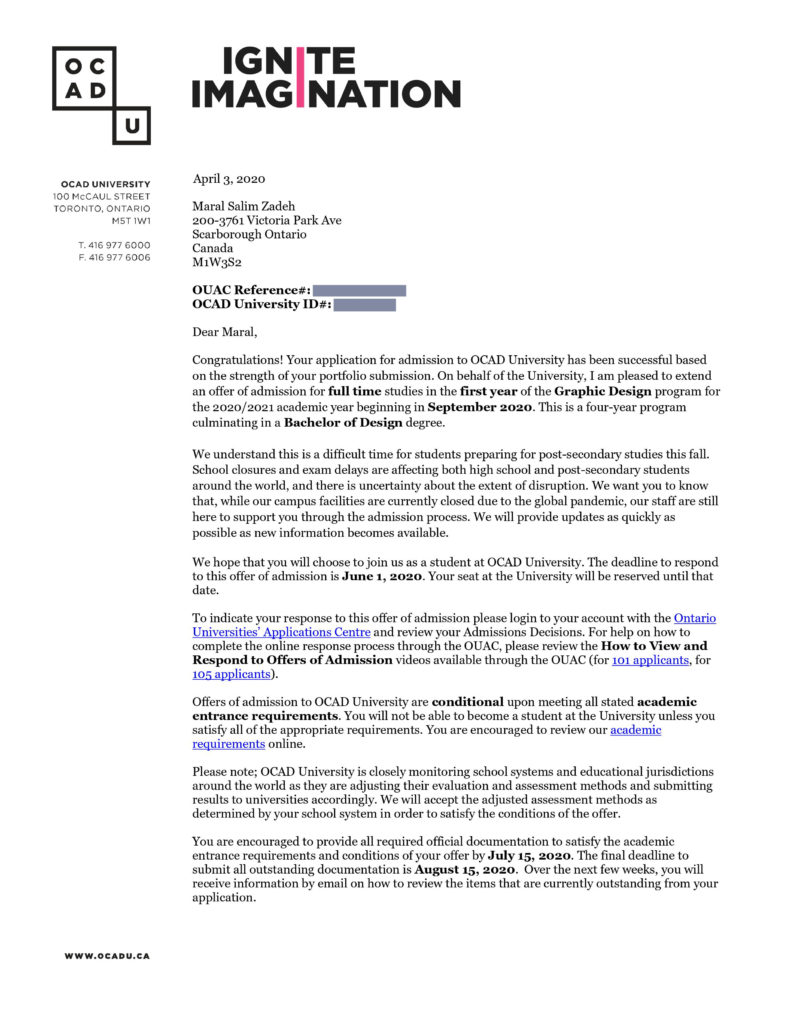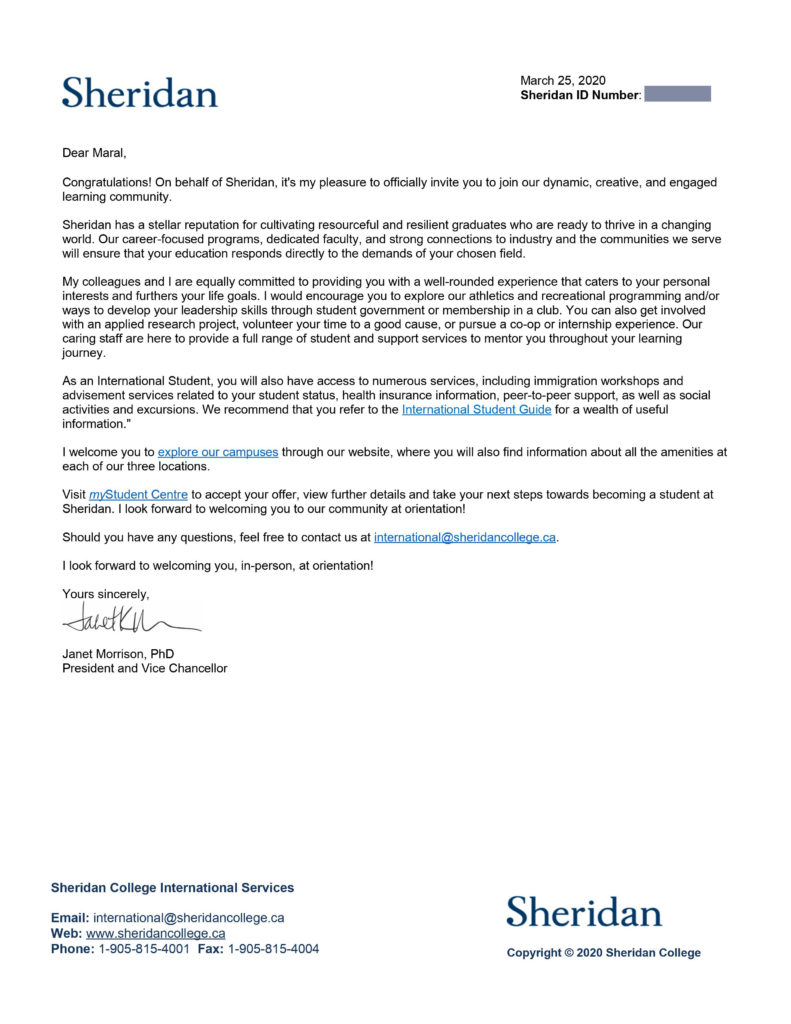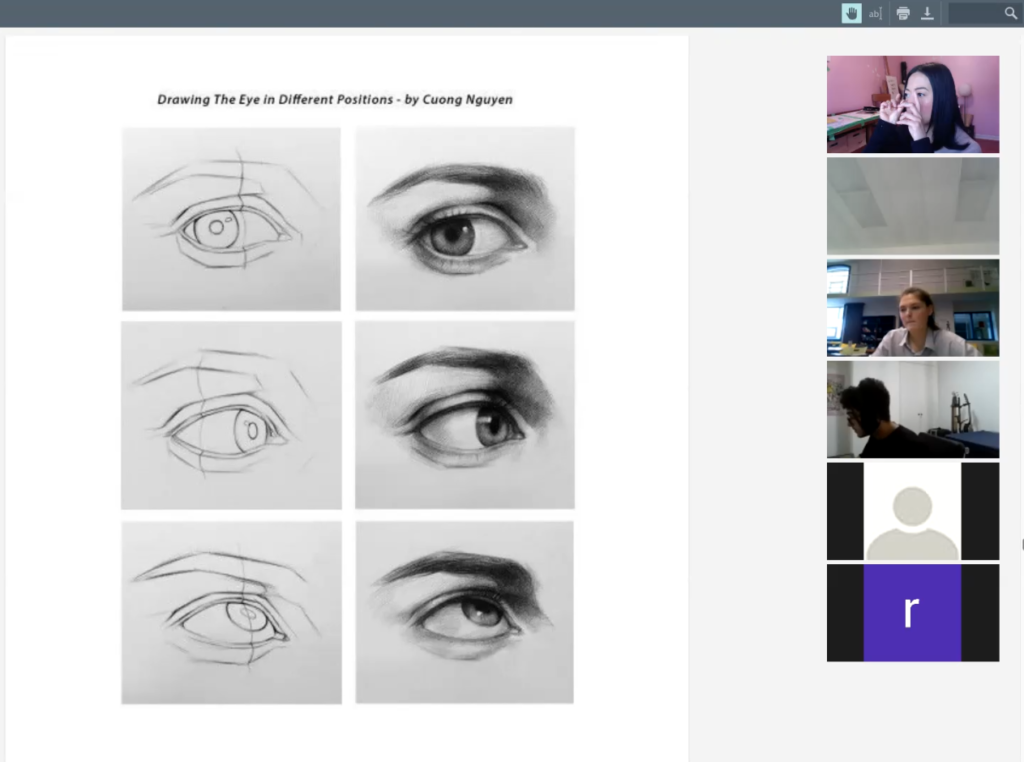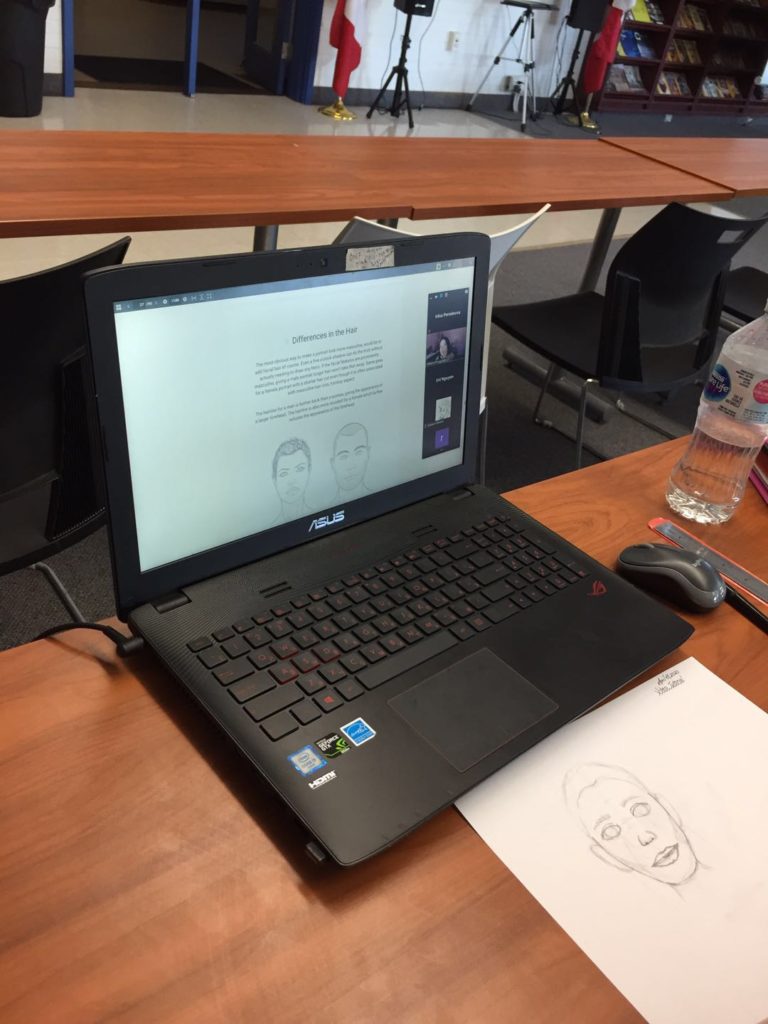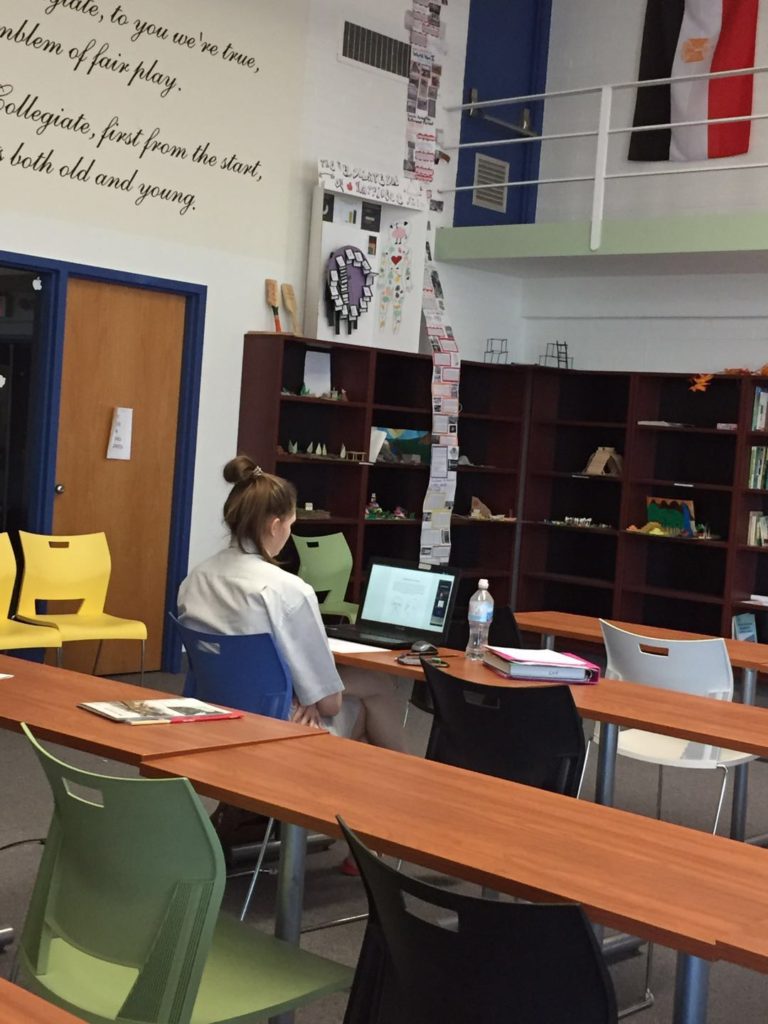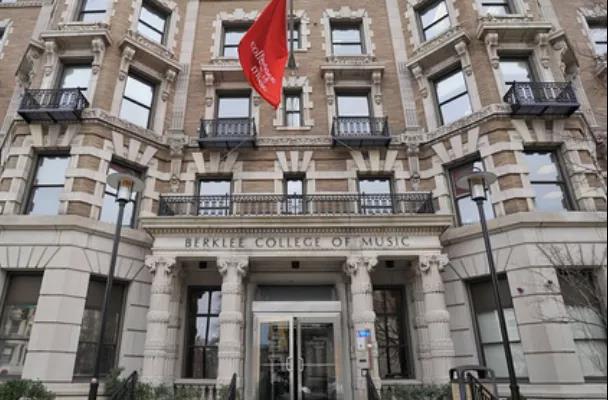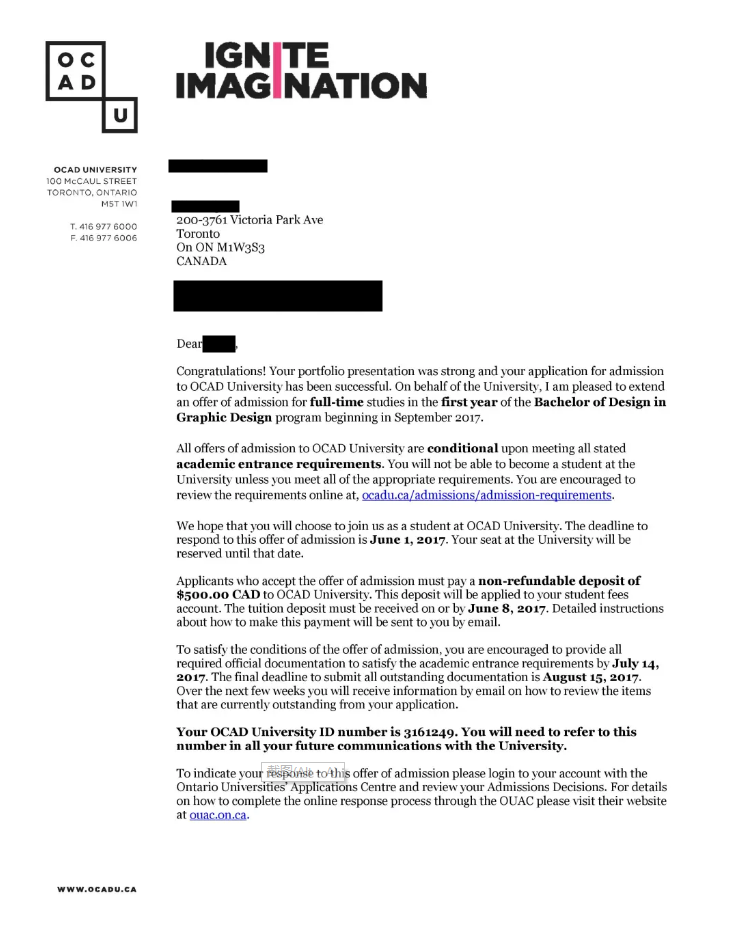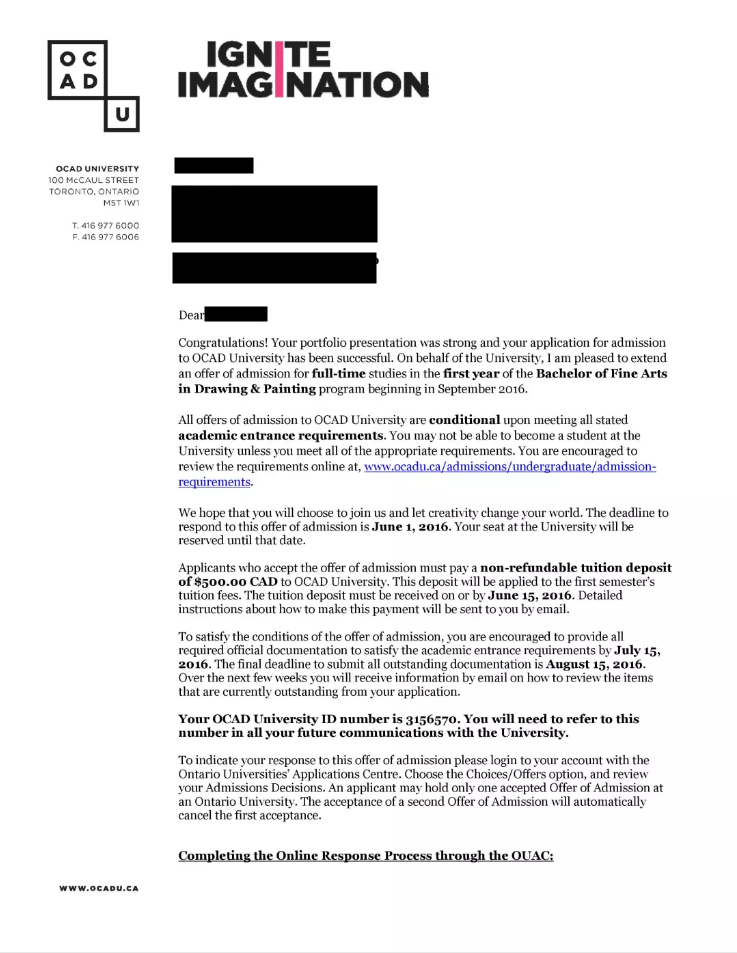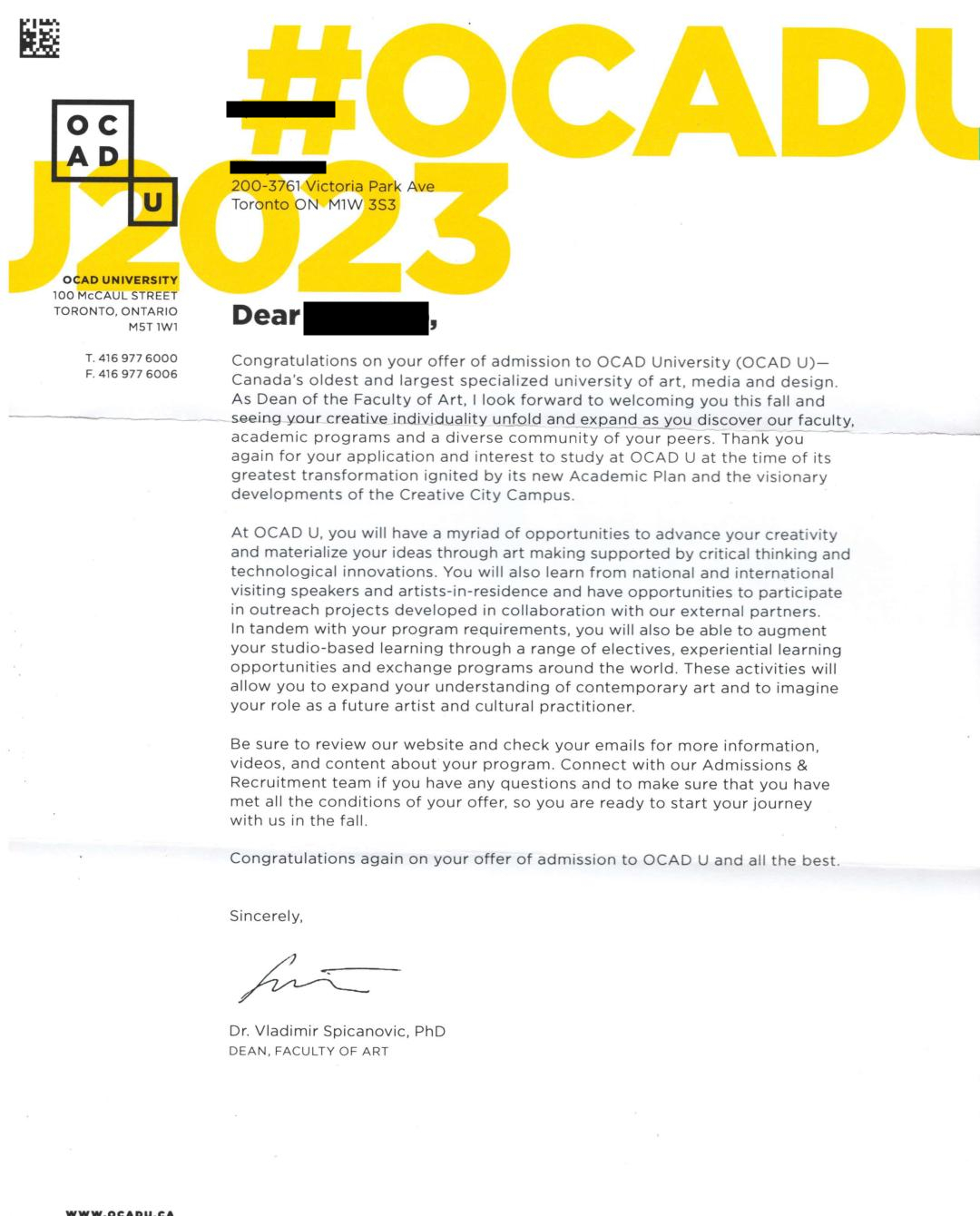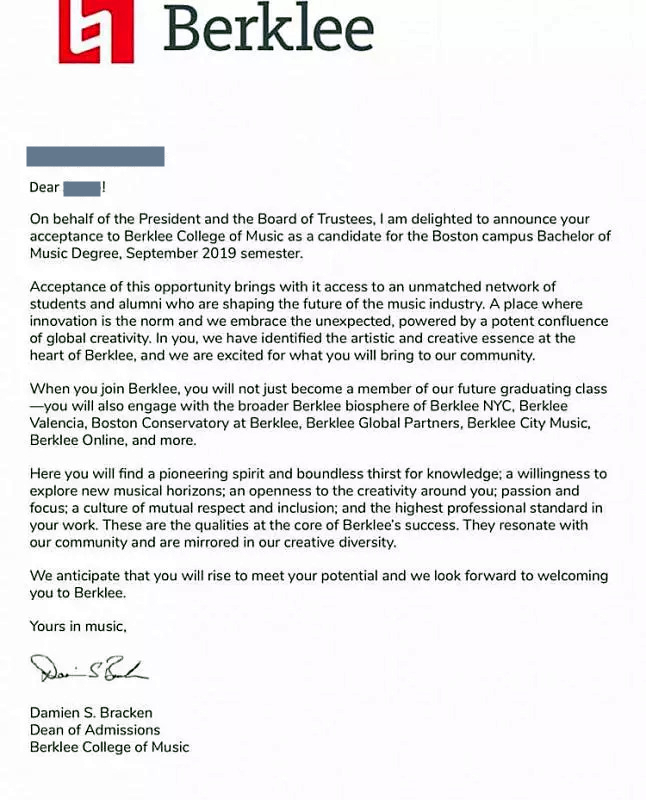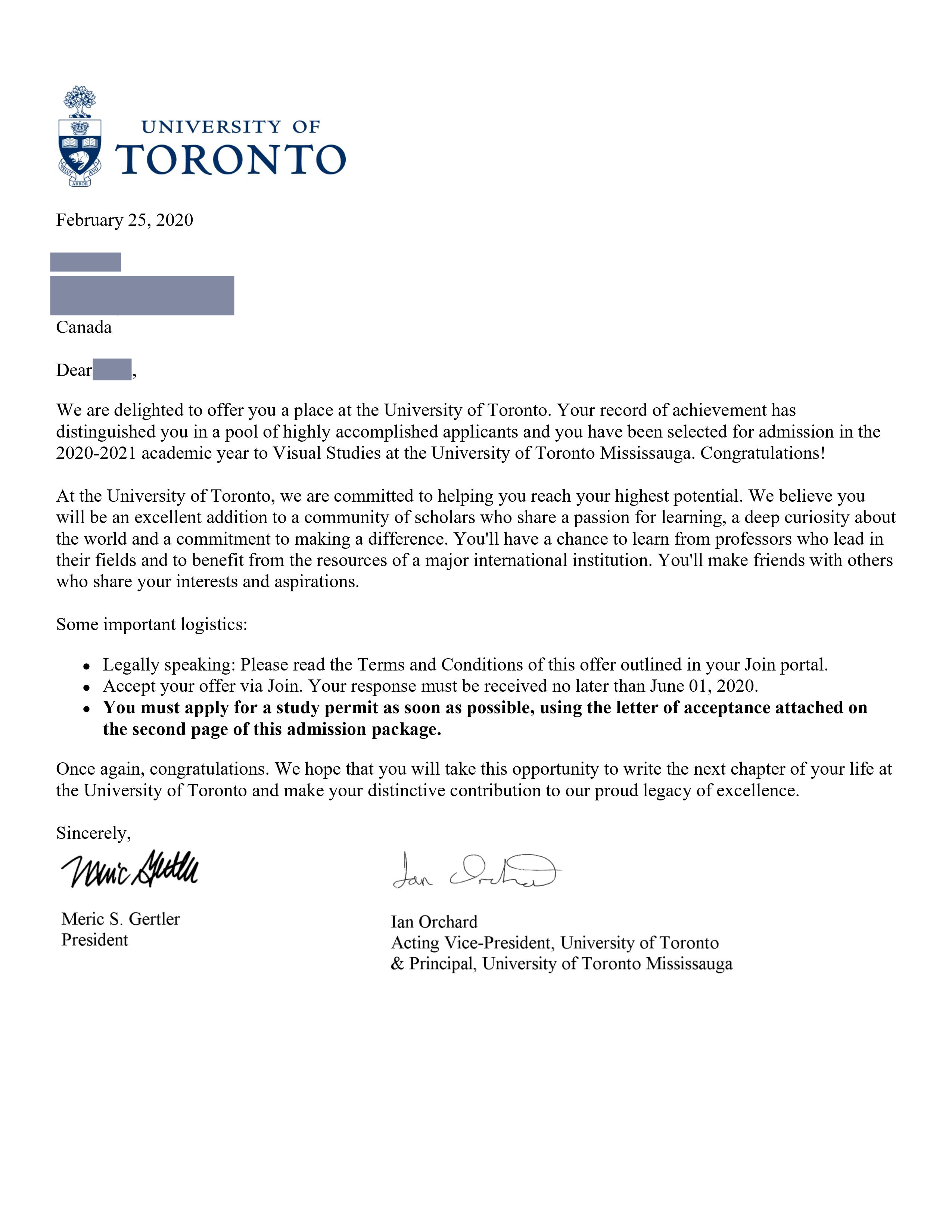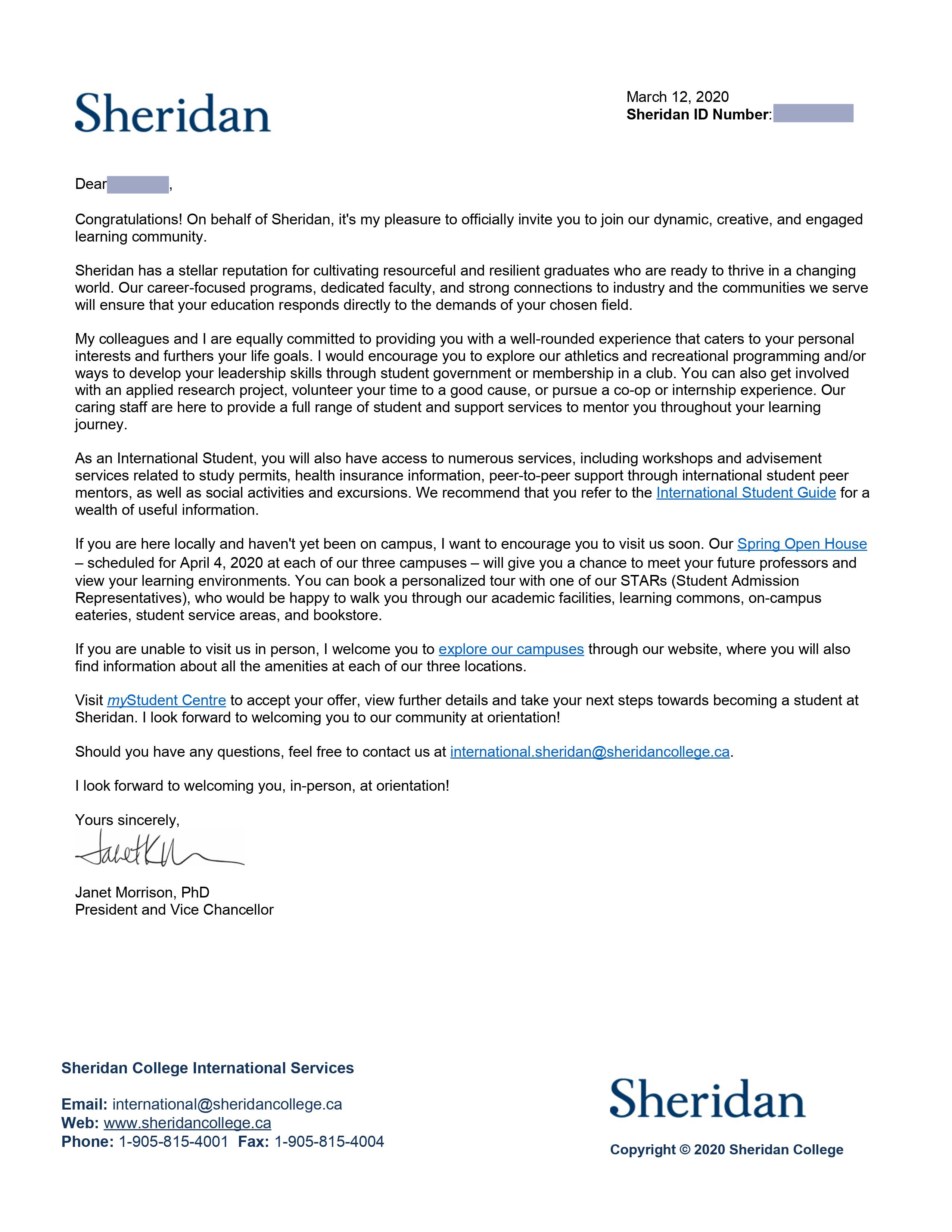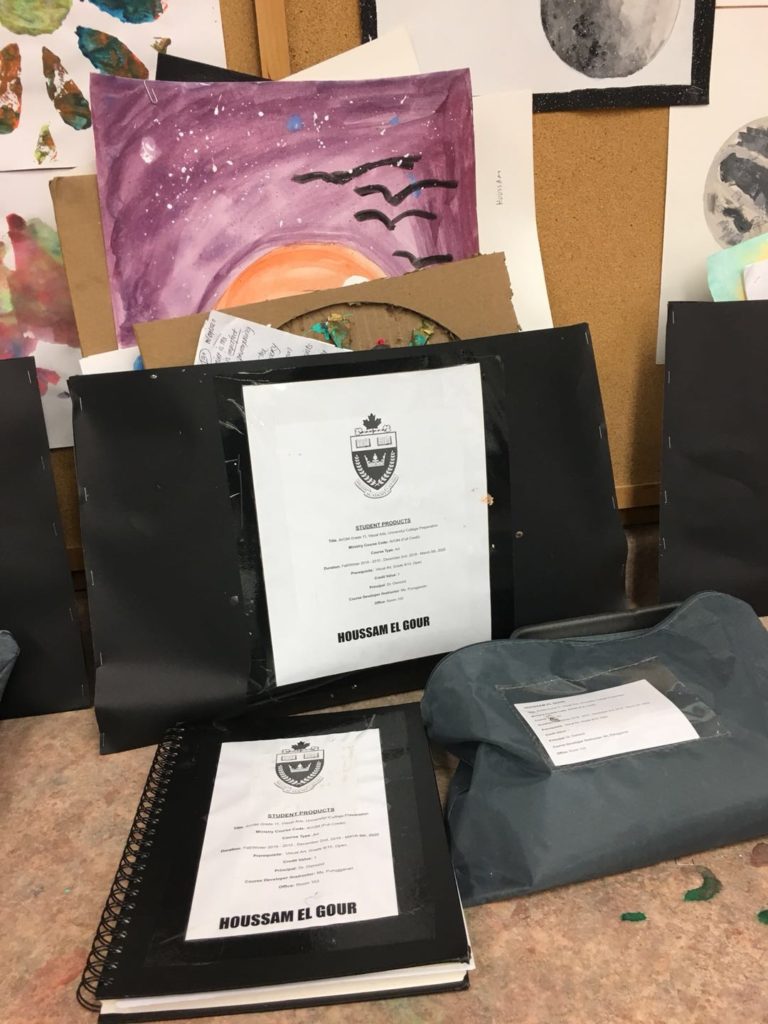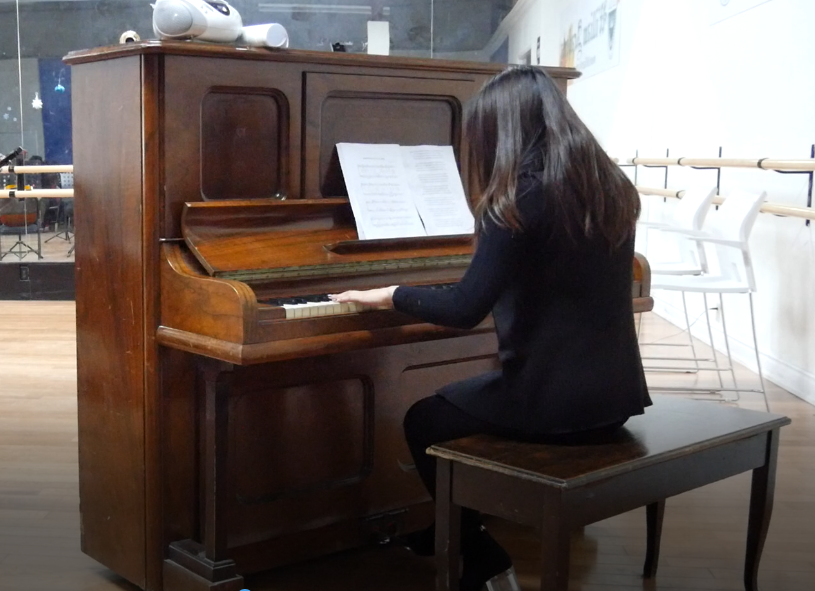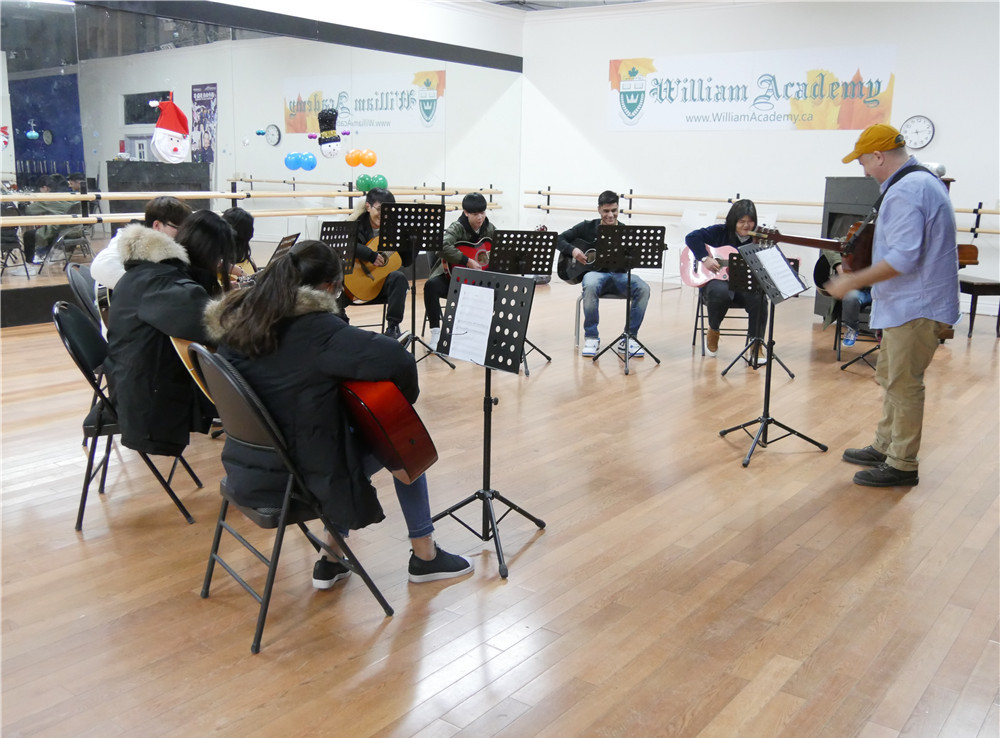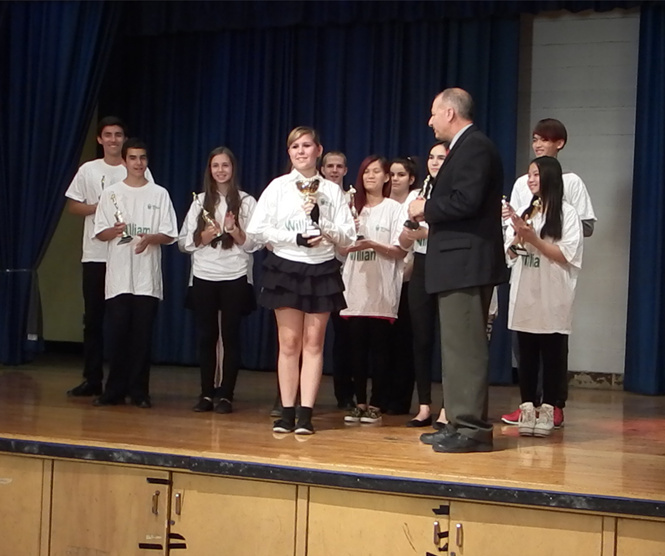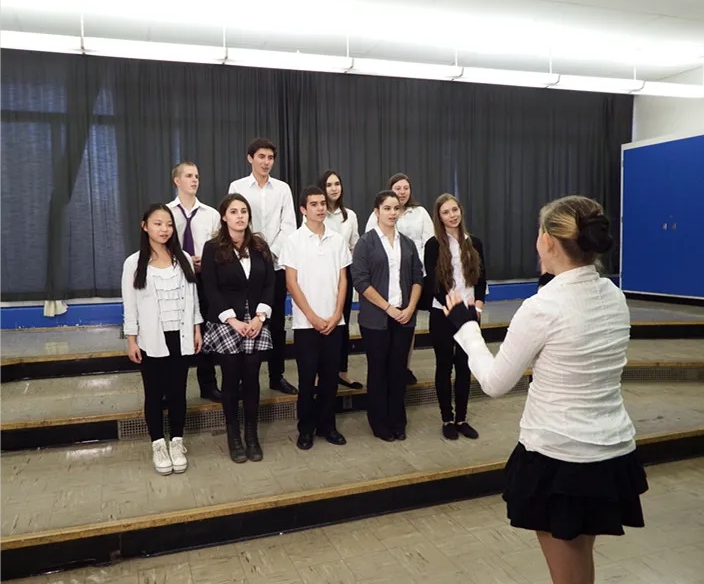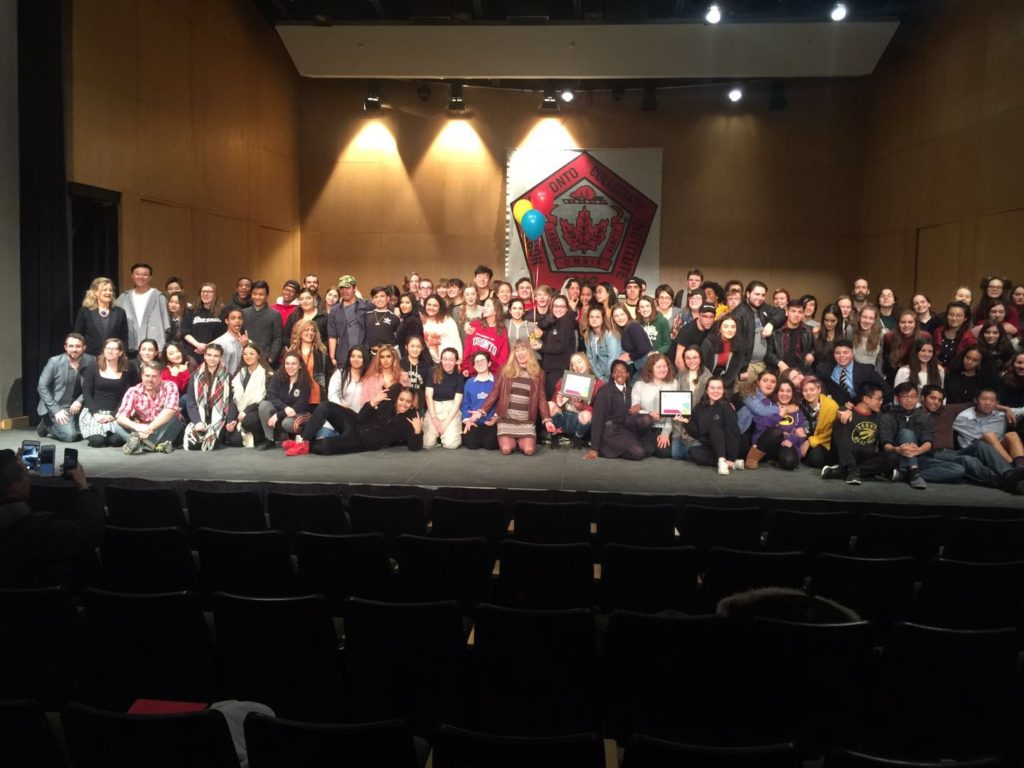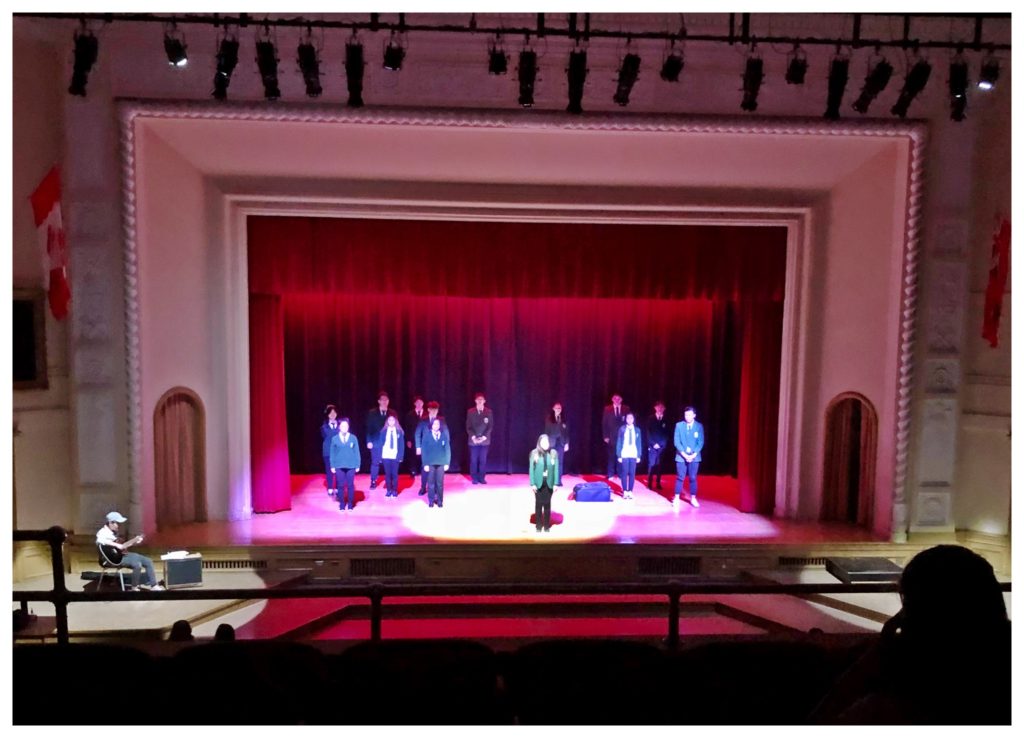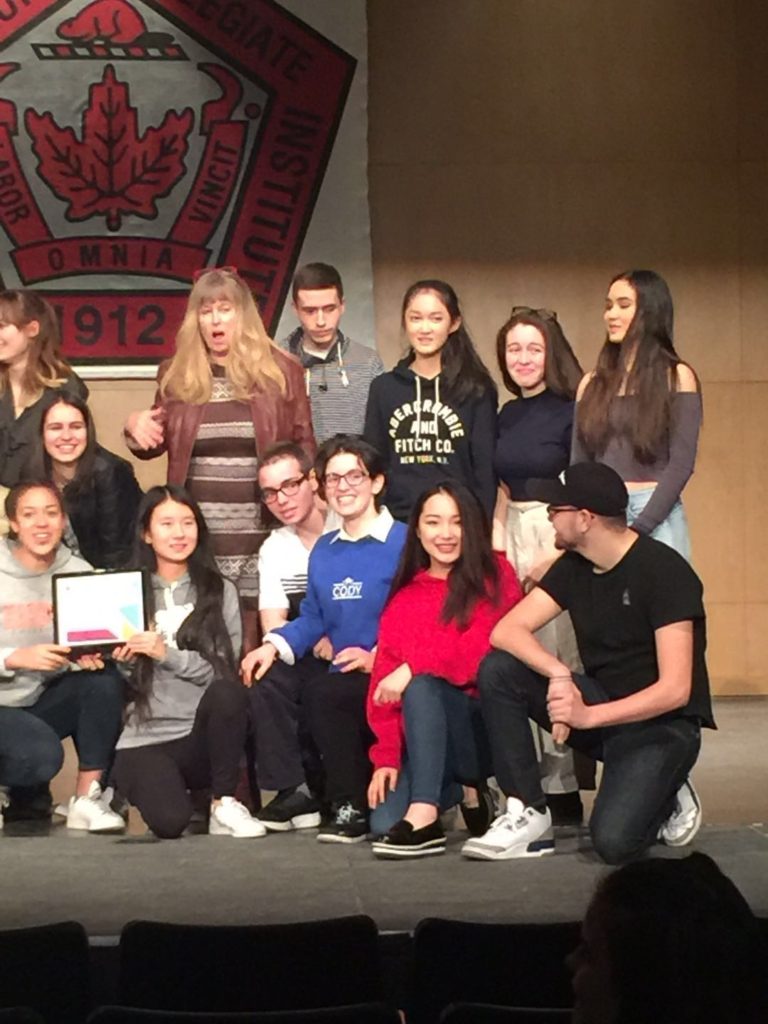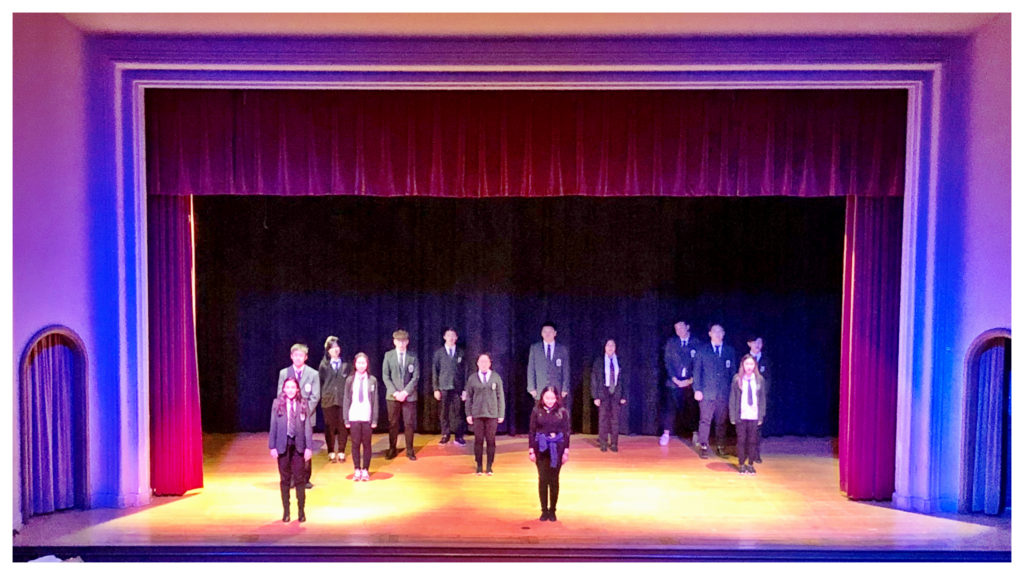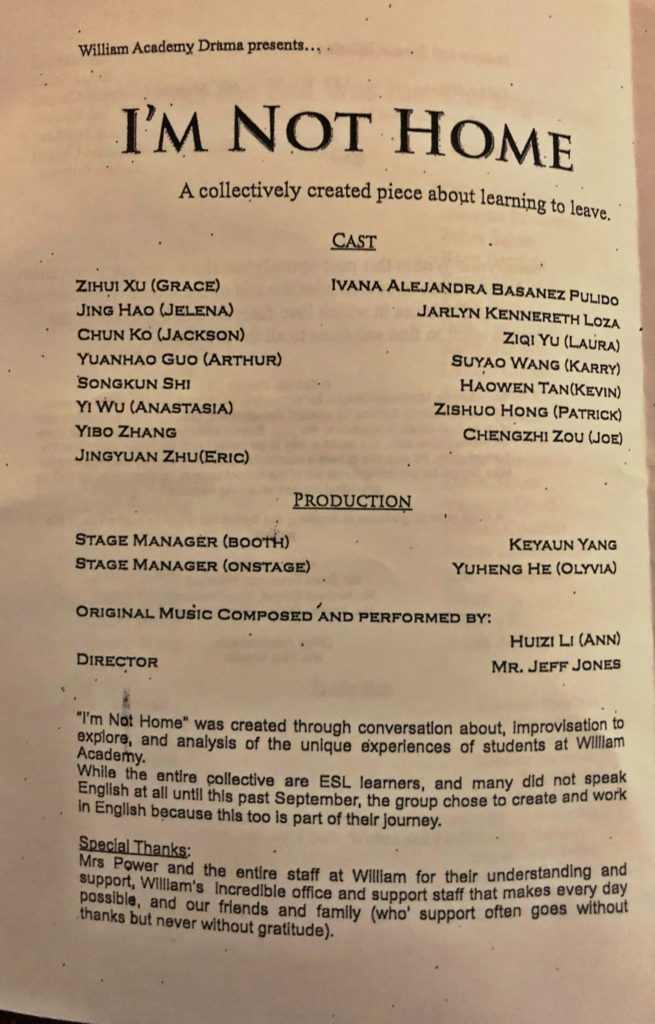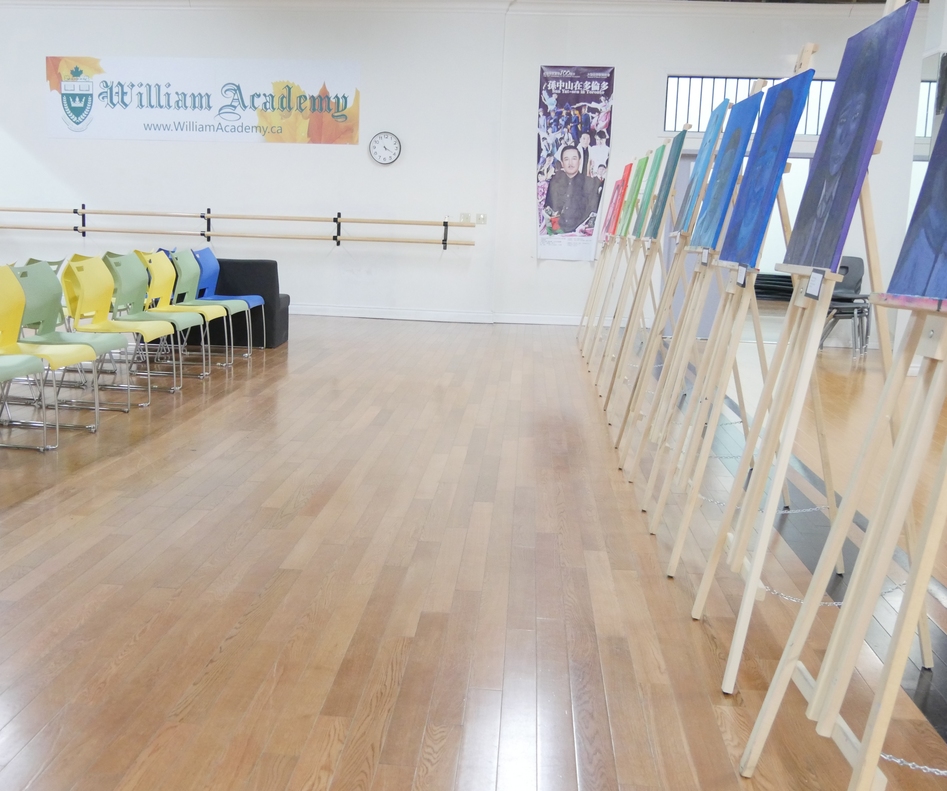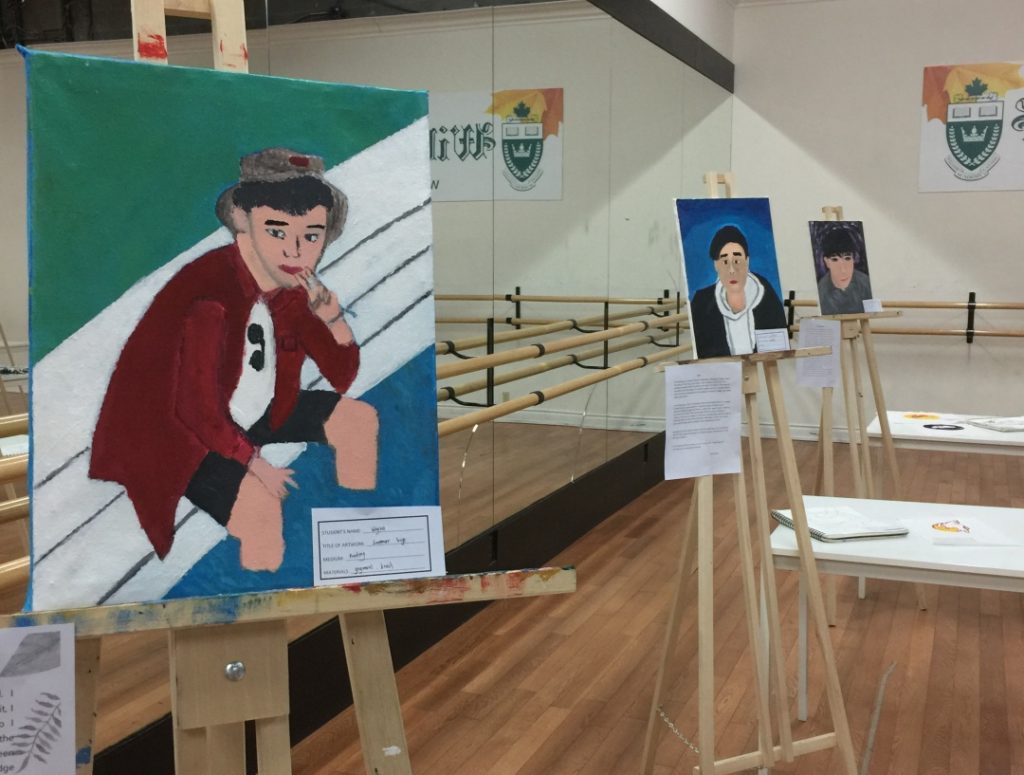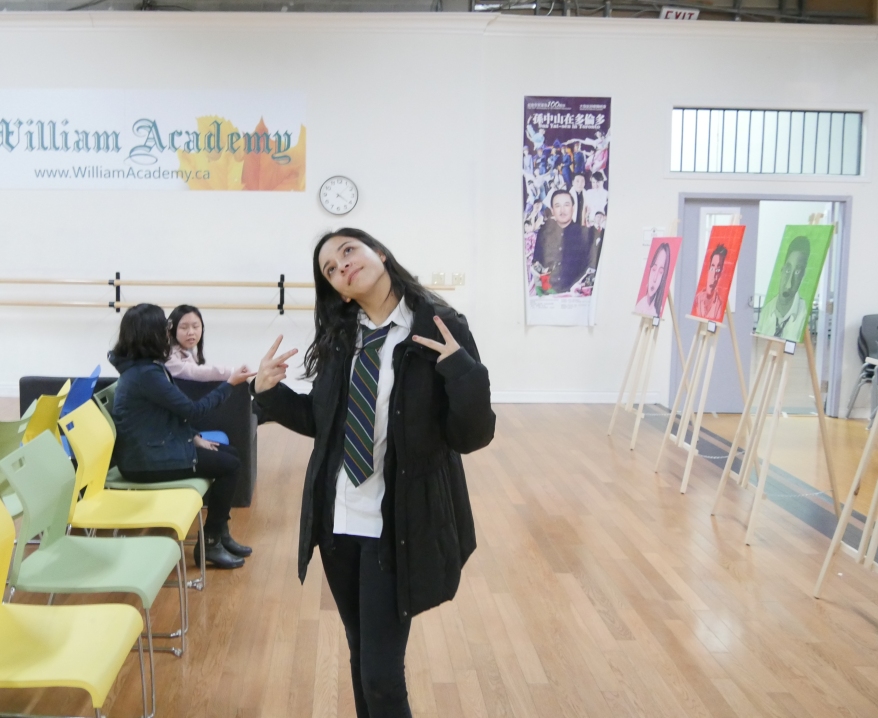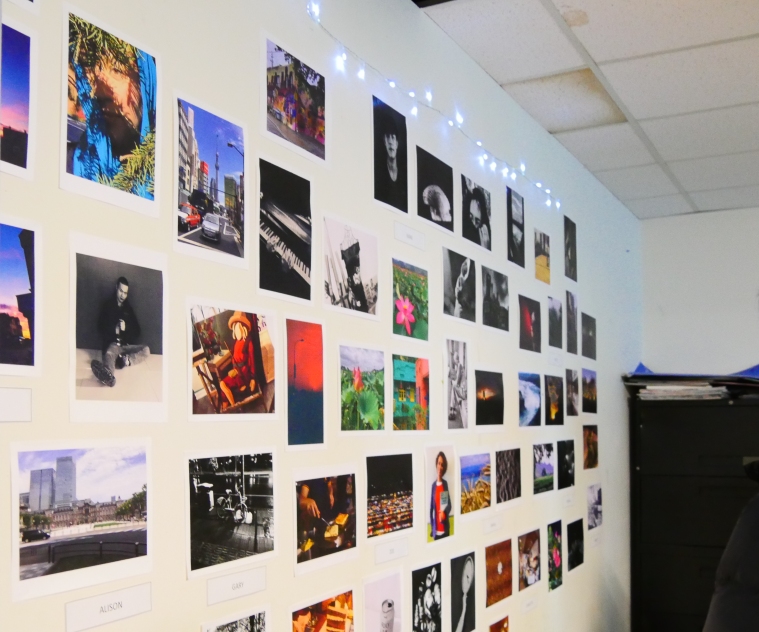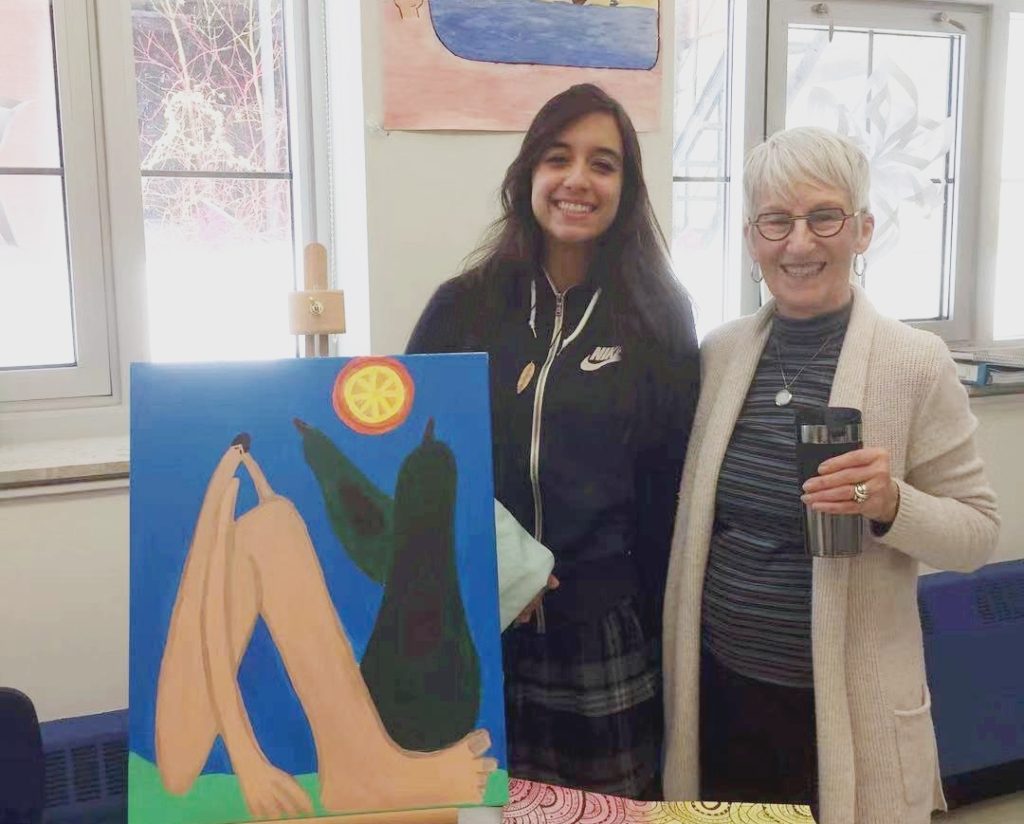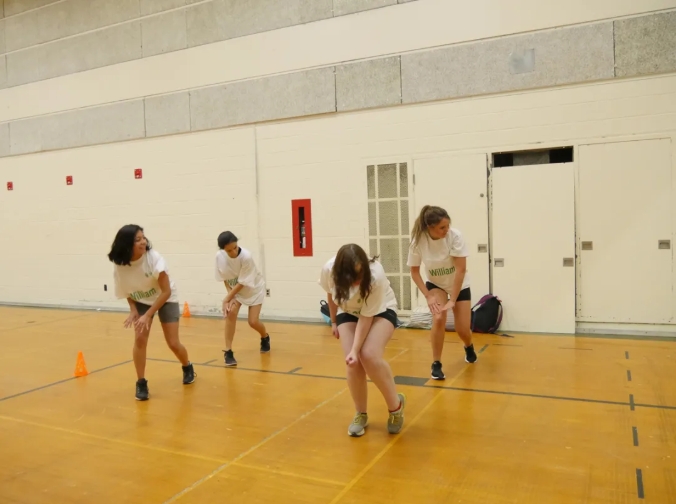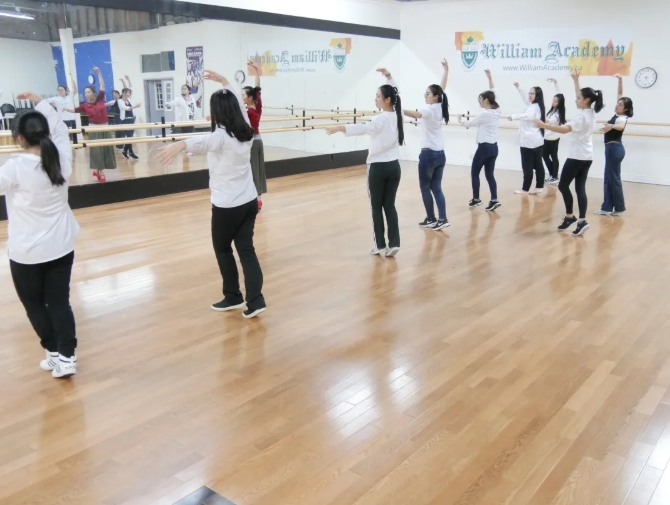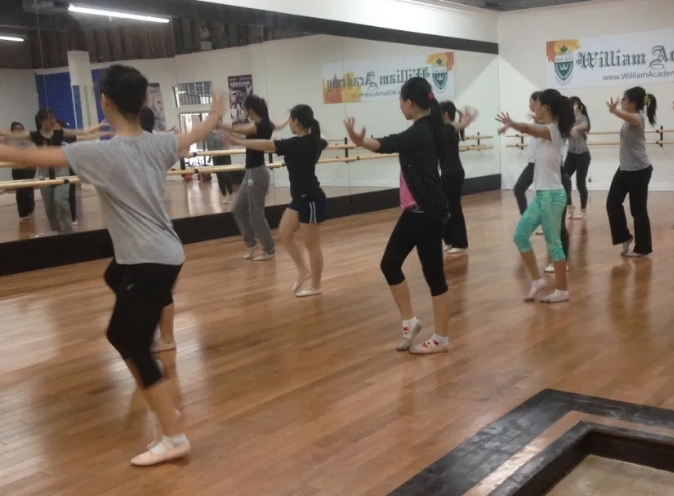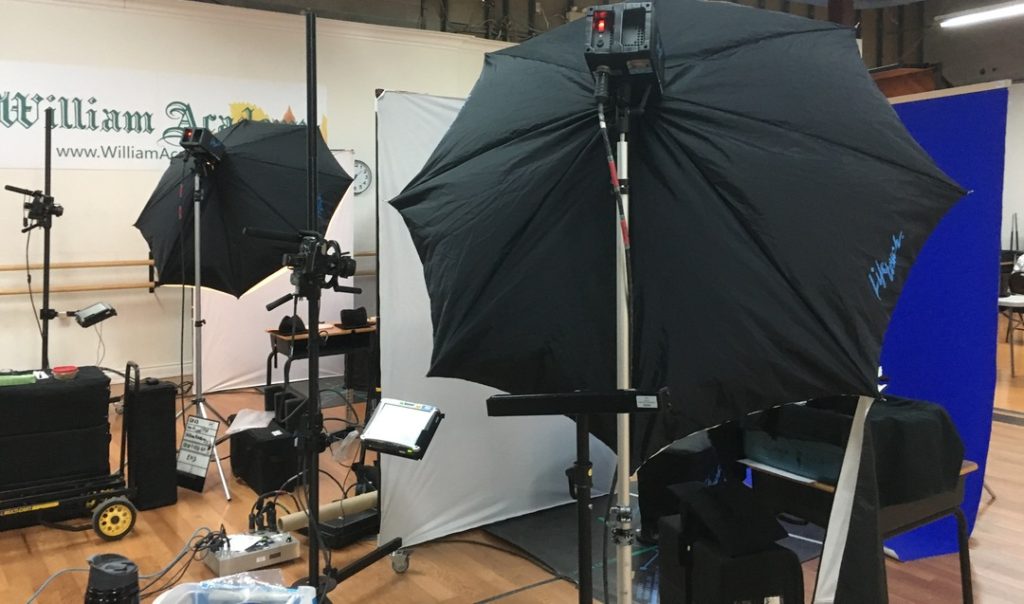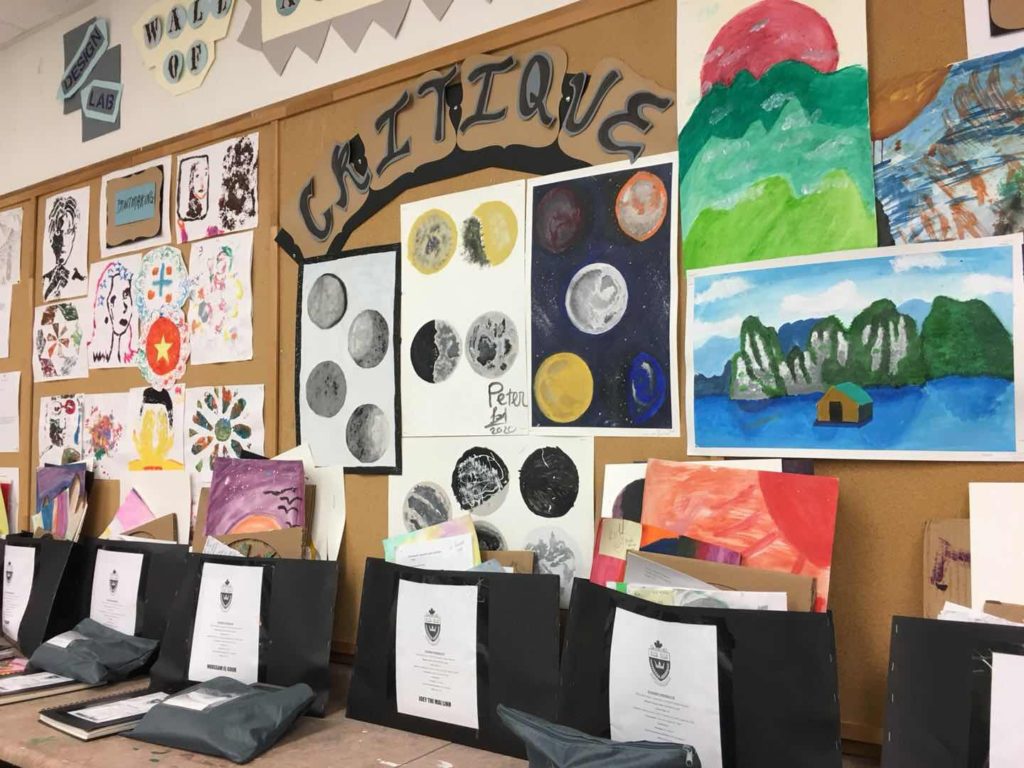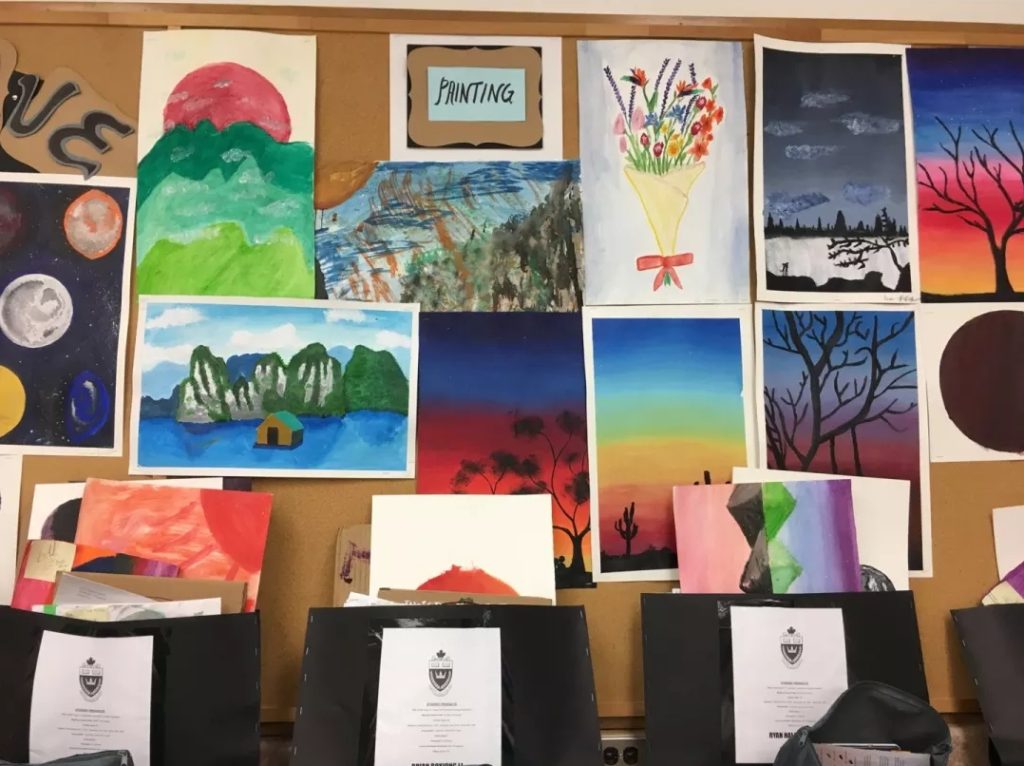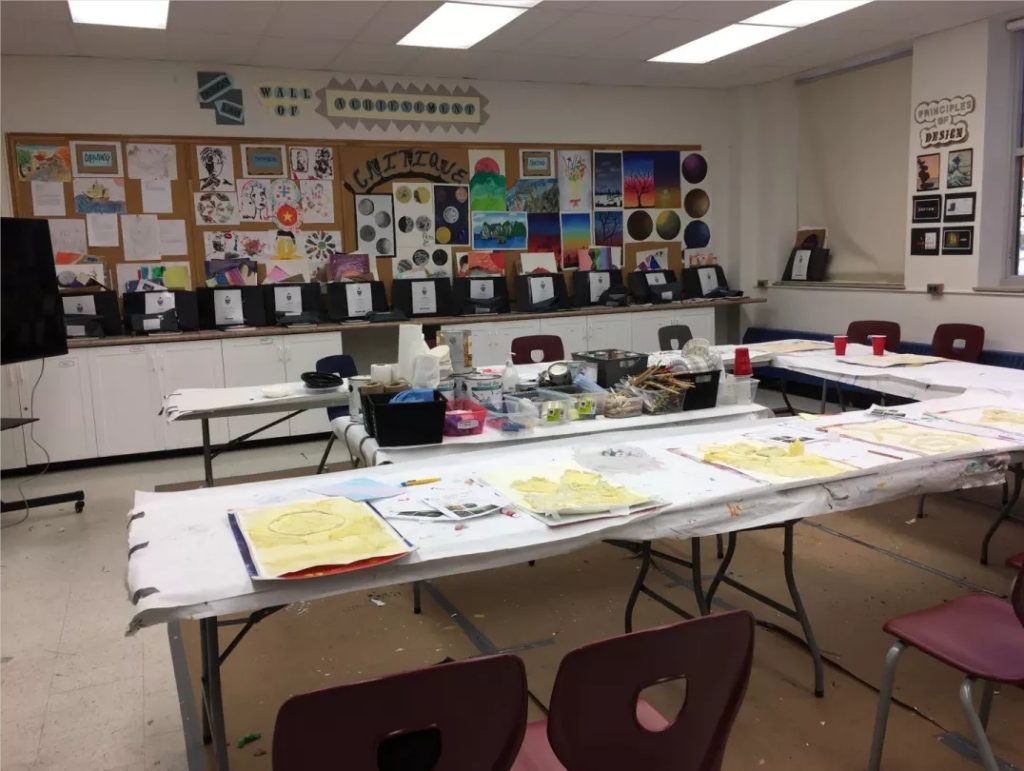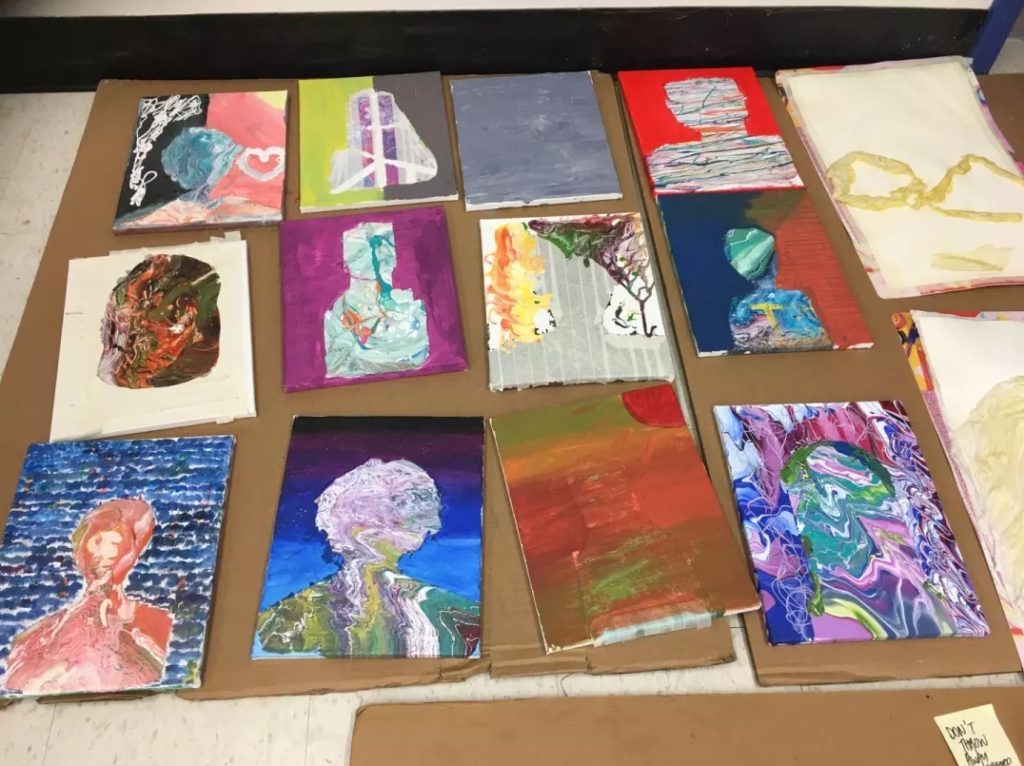English 简体中文 繁體中文 Español Português 한국어 日本語 Tiếng Việ
Top student ——Maral from Iran drew a mural for William Academy
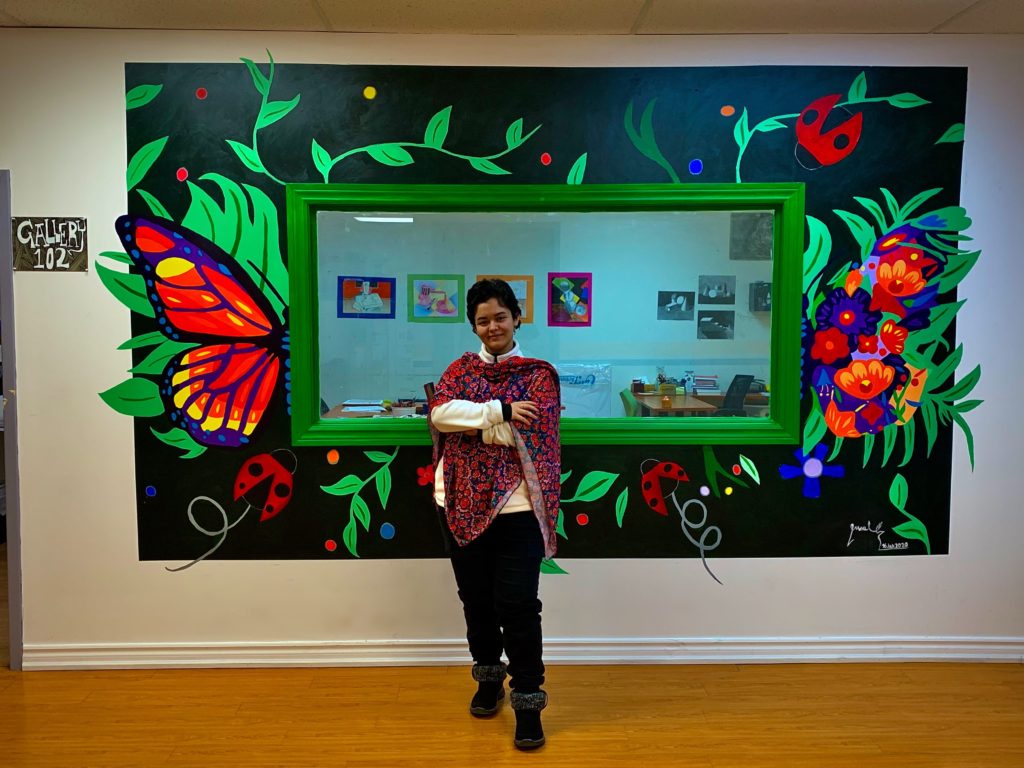
The mural is being painted
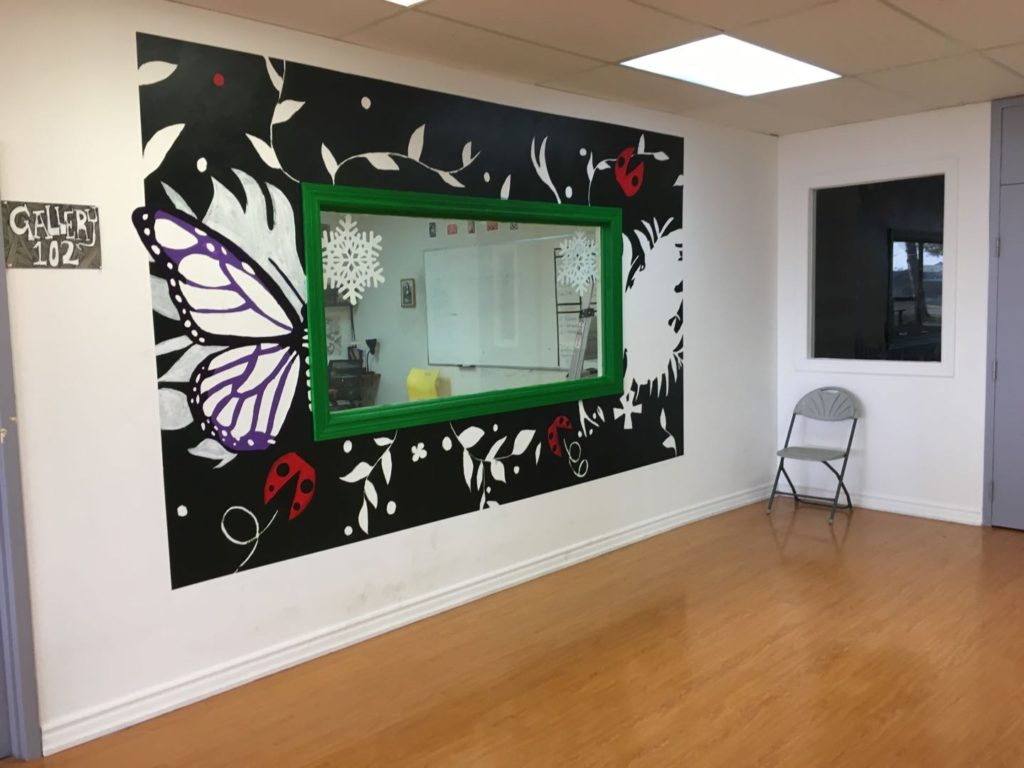
Congratulations!
Our student Maral received offers from OCAD and Sheridan,
the 2 top-ranked art universities in Canada!
William Art Springboard program in Toronto is a leading art program which attracts both local and international art students.
William Academy’s art program is directed by professional art instructors who guide students to complete art courses/portfolio based on high North America’s standards to meet the entrance requirements of the prestigious art universities.
A “Hybrid” of Learning
In the face of COVID-19, schools in Ontario have switched to online learning. It is uncertain when students can attend the physical classrooms due to the existing social distancing regulations.
Starting this summer and onward, William Academy will switch to a new normal of learning – A “hybrid” of attending classes in Person and Virtually. While regular in-class courses will be taught by teachers in our school, they will simultaneously be taught virtually for students who choose to take their courses via Zoom.
In order to reduce the risks associated with COVID-19 for students who choose to attend classes in person, , we will ensure that students sit at least 6 feet apart in classrooms, with a maximum of 8 students per classroom. Our school will supply the necessary technology and tools to ensure that the classroom environment will be interactive for all students, whether they are attending classes in-person or virtually.
Art Universities That Our Students Have Attended
Canada
OCAD University
NSCAD University
Emily Carr University
Alberta University of the Arts
Carleton university
Brock University
Sheridan College
USA
University of Southern California
Savannah College of Art and Design(SCAD)
Berklee College of Music
Columbia University School of the Arts
Why Studying Arts?
In today’s society where the demand for arts and creative talents is constantly increasing, art majors are becoming more popular, particularly, in North America. People who are talented in art can expect good job prospects in a great number of fields such as advertising, media design, industrial design, interaction design, landscape design, environmental design, visual art, professional painting, criticism, sculpture, photography, animation, game production, cinematography, etc.
Not only does arts education equip students with advanced critical thinking abilities, it also helps their emotional development and increase their academic achievement. Art has been associated with progress in math, reading, cognitive abilities, critical thinking and verbal skills. Researchers have also linked the arts to the improvements in concentration, confidence, and teamwork.
Many businesses including Microsoft, Citicorp, Apple, and General Electric have acknowledged the importance of the arts in the training of students.
If the art students plan to develop their career further in Canada after graduation, they can obtain Canadian immigration status in the future. But if they decide to return to their home country, graduating from famous North American universities broadens their horizons and gives them the opportunity to perform more confidently in any competitive job market
The arts “can connect people more deeply to the world and open them to new ways of seeing, creating the foundation to forge social bonds and community cohesion”
2005, Rand Coorporation
Offers From Famous Art Universities
Highlights of the Art Programs at William Academy
- Lectures & seminars by famous artists in Ontario.
- Advanced art teaching facilities, with large performance halls, sculpture room, painting room, multimedia computer room.
- Unique art courses: there are five categories for the students to choose from: dance (ballet and modern), theater arts, media arts, music (composition, band and vocal), and visual arts.
- Professional teachers, periodic evaluations of the students’ progress, and timely reports to parents.
- Contract: guaranteeing students to receive admission from famous art schools, otherwise refund is available according to the agreement.
- A large number of graduates are admitted to famous art universities in North America such as Ontario College of Art and Design (OCAD) and Sheridan College.
Courses
William Academy offers a full range of art classes alongside more traditional courses. Students are free to select from mathematics, science, humanities, and business courses as well as the ones listed below:
Music
Music study at the Grade 11 and 12 level enhances students’ understanding and appreciation of music through the development of practical skills and creative work. Students extend their creative problem-solving skills, individual and cooperative work habits, and knowledge of themselves and others. They develop a sense of personal responsibility and connections to their communities, and explore future careers. Units in music include: vocal, instrumental music, music composition and history.
Piano Practice Video
Music Practice Photos
Drama
In grade 11 and 12 drama classes, students extend their understanding and interpretation of dramatic texts, forms, characters, and theatrical productions. They incorporate a variety of dramatic elements and conventions in their performances and productions. Students engage in increasingly effective social interactions and collaboration as they create, perform, and analyze drama. In these courses, students will experience being performer, audience, playwright, technician, designer, and critic.
Students use the elements of drama (role/character, relationship, time and place, focus and emphasis, and tension) to create works that are related to their personal interest and experience. In doing so, they integrate technology to enhance the impact of drama works and to help convey mood, create tension, and communicate a message.
The William Academy Drama Club performed ‘I’m Not Home’ at the Ontario Drama Festival – Canada’s oldest youth theatre festival. Mr. Jones worked tirelessly with students to deliver a performance that was praised by the judges for the play’s deep connection with the international student experience and the opportunity it gave students with a range of English language skills.
At the awards ceremony, two of our students received recognition for their talent and hard work. Ann received the Merit Award for the song she composed which was sung by Jelena, Ivana and Jackson. Furthermore, Grace received an Excellence Award for her acting skills in the production “I’m Not Home”.
Visual Arts
Visual arts courses at the Grade 11 and 12 level focus on studio work and critical analysis of a wide range of art works. Students apply the elements and principles of design with increasing skill and creativity to produce art works that communicate emotions or comment on issues. They apply their skills using an array of media, including alternative media, and current technologies, to create two- and three-dimensional art works for a variety of purposes. Units in visual arts include printmaking, sculpture, painting, ceramics, film/video and alternative media.
Dance
In grade 11 and 12 dance courses, students continue to learn about and through dance. The medium of expression is movement; the instrument is the human body. Dance education goes beyond the study of a repertoire of movements to offer an understanding of the principles and concepts that govern and define the art.
Dance transforms images, ideas, and feelings into movement sequences through innovative choreographic insights. Learning dance requires a balance of knowledge and skills, and a synergy between intellect, ability, and emotion. Engagement in dance can provide a context for understanding world issues and exploring a variety of cultures. The study and practice of composition provide students with the essential building blocks that support lifelong interest in, appreciation of, and curiosity about dance. Genres include modern, jazz and dance composition.
Media Arts
Media arts incorporates a variety of materials, techniques, tools, technologies, and skills from various arts disciplines including dance, drama, music, and visual arts. Elements are also drawn from the contributing arts: for example, line, color, and texture from visual arts; space, time, and energy from dance; rhythm (duration), harmony (pitch), and dynamics from music; and character, place, and tension from dramatic arts.
The technologies and processes used and adapted to create media art may be traditional, including, but not limited to, photography, film, photocopy art, analog and electro-acoustic sound, classical animation, and video/television. The technologies and processes may also be digital: computer software, digital imaging and graphics, digital sound recording and sonic sculpture, two- and three-dimensional animation, multimedia production, holography, and web-page design.
Portfolio Development Course (Non-Credit)
William Academy also offers the portfolio development course that helps students select samples of their best works and present them professionally to the art universities around the world. Experienced artists sit with the students to refine their artworks and provide feedback to them to help the dream of those who wish to pursue a post-secondary degree in the arts come true.
“In my own philanthropy and business endeavors, I have seen the critical role that the arts play in stimulating creativity and in developing vital communities… the arts have a crucial impact on our economy and are an important catalyst for learning, discovery, and achievement in our country.”
Paul G. Allen
Co-Founder, Microsoft
Admission
Intake: September, November, January, March, June, July every year.
Admission Requirements:
- Demonstrated interested in art and creative media studies
- Portfolio Submission and Review
- Interview with WA selection committee
- Basic English
Annual Tuition
CAD $29,800/year
Your future starts here!

